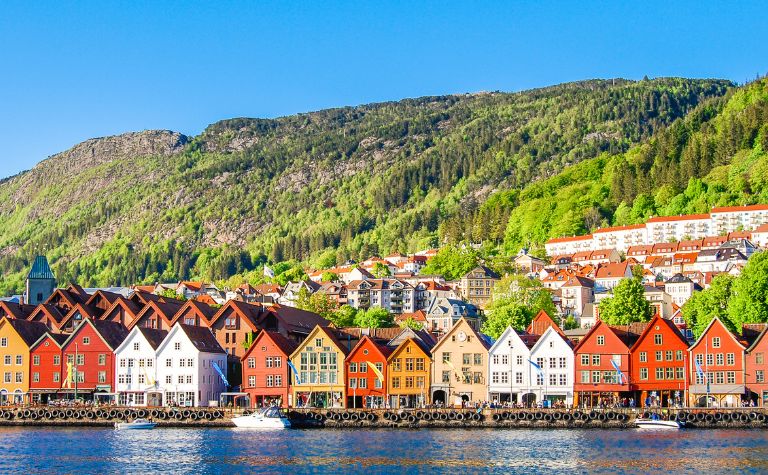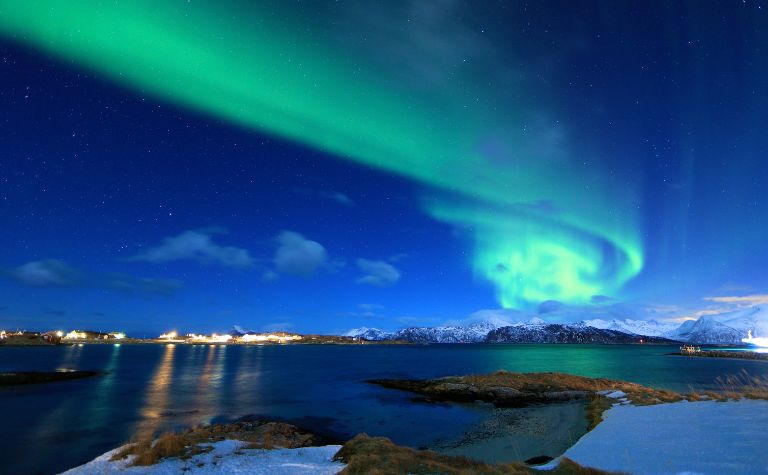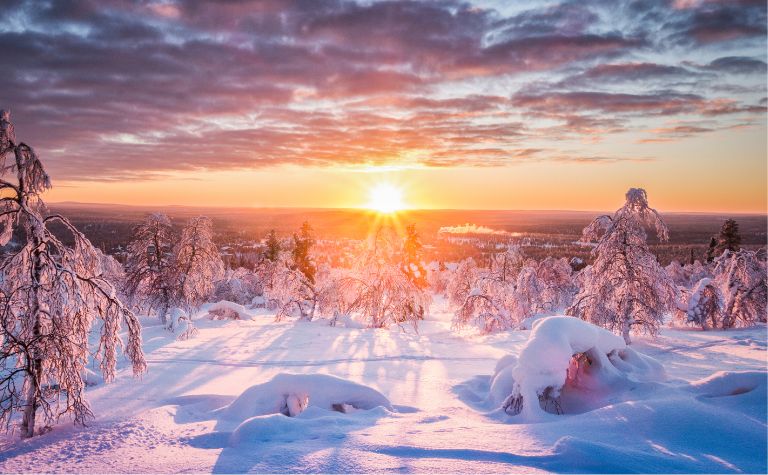Many people think of Scandinavians as being predominantly blonde. However, significant numbers of Swedes, Danes, and Norwegians have dark hair.
So, what accounts for such variation in hair color, and why do so many Scandinavians have dark hair?
Some Scandinavians have dark hair because ancient Scandinavian DNA had genetic contributions from different ethnic populations.
While some of these ancestral groups had light-colored hair, others were dark-haired. Many indigenous peoples and more recent immigrants are also predominantly dark-haired.
This article explains the waves of migration that gave rise to the ethnic Scandinavian population.
It also describes how rapid population exchange due to globalization continues to influence Scandinavian populations today.
Also, see Why Are Scandinavian Women So Beautiful? to learn more.

The Origins of Dark-Haired Scandinavians
High levels of ethnic homogeneity and their far-northern genetic ancestry means that ethnic Scandinavians have among the highest rates of blonde hair in the world. [1] [2]
48% of Norwegians, 54% of Swedes, and 64% of Danes have blonde hair. Many others have light brown hair.
Despite being a relatively large [percentage of the population by global standards, these numbers also reveal that a significant number of Scandinavians have dark hair.
So what explains such significant variations in hair color in a single ethnic population?
The answers lie in prehistoric migrations that took place many thousands of years ago. More specifically, two factors explain why some ethnic Scandinavians have dark hair today:
- Many ancient Scandinavians had dark hair
- The early Scandinavian population was incredibly genetically diverse
Also, see Why Do Scandinavians Have Asian Eyes? to learn more.
Different Ethnic Groups Contributed to Ethnic Scandinavian DNA
Recent studies of ancestral Scandinavian DNA have shown that Mesolithic Scandinavian populations were far more genetically varied than their southern European counterparts. [3]
In the wake of the last Ice Age, the Scandinavian Peninsula saw multiple waves of migration.
Often, the people who moved into the territories now comprising Sweden, Denmark, and Norway were from very different ethnic groups.
Some of these ethnic groups had light hair; others had dark hair. Their descendants inherited both these traits.
Thus, mixed ancestry partly explains why some ethnic Scandinavians have dark hair today.
The Earliest Scandinavians Had Mostly Dark Hair
The first people to settle in the Scandinavian Peninsula came from the South around 14,000 years ago.
Predominantly dark-skinned, they are referred to as Western Hunter-Gatherers.
Over four thousand years, the Western Hunter-Gatherers mixed with a distinct population from the East.
Known as Eastern Hunter-Gatherers, these later migrants were light-skinned.
The resulting population —Scandinavian Hunter-Gatherers— had a mixed skin color and was predominantly dark-haired. [4]
So, not only were early Scandinavians genetically diverse; but they were also predominantly dark-haired, to begin with.
Also, see Why Are Scandinavians Attractive? to learn more.

Blonde Hair Is Rarer Than People Think
Lighter skin allows human bodies to absorb more vitamin D from sunlight, which is scarcer closer to the poles.
Thus, for thousands of years, far-northern populations have developed a sexual preference for partners whose bodies produce less melanin (the chief biological determinant of skin color).
Over many generations, this has resulted in these populations becoming fairer compared to their equatorial counterparts.
But melanin also affects hair color. This is why populations tend to be blonder the further away from the equator they are situated.
However, the genetic variation that produces differences in melanin is minuscule— just 1/3,200,000,000th of the long chemical trail that is human DNA. [5]
Additionally, many people born with blonde hair will find that their hair turns darker as they age.
This is why only 2% of the world’s population has blonde hair. [6]
While Scandinavian populations have the highest rates of blonde hair in the world today, even thousands of years of selective breeding cannot overcome such low odds.
So significant numbers of Scandinavians will always have dark hair.
Also, see Why Are Scandinavian So Big? to learn more.
Several Indigenous Populations Are Predominantly Dark-Haired
Significant numbers of indigenous people have traditionally not been included under the ethnic Scandinavian umbrella.
As most of these people are dark-haired, their contribution to Scandinavian populations is worth considering.
Strictly speaking, there is only one indigenous population native to Scandinavia – the Sami people.
Although their language is closer to Finnish than the other Scandinavian tongues, the Sami have lived on the Scandinavian Peninsula for thousands of years.
Today, there are over 60,000 Sami, the overwhelming majority of whom live in Norway and Sweden.
Smaller numbers of Sami live in areas of Finland and Russia, which lie outside Scandinavia. Of course, Sami has also mixed with the ethnic Scandinavian populations over the years.
Additionally, while Greenland is not part of the Scandinavian Peninsula, it is a Danish territory.
So, strictly speaking, Inuitic Greenlanders (the vast majority of the population) are Scandinavians by citizenship.

Many Newer Immigrants Are Predominantly Dark-Haired
Their incredible wealth means that Norway, Denmark, and Sweden continue to attract immigrants in large numbers today.
The Scandinavians need these new immigrants to bolster their workforces and remain competitive globally.
They also choose to provide sanctuary to refugees on humanitarian grounds.
In 2019, the share of the national population comprised of first or second-generation immigrants for each country was as follows:
- Norway – 12%
- Denmark – 13%
- Sweden – 18% [7]
Many migrants are from Scandinavian and other northern European nations. Others are from different parts of Europe, Asia, and Africa.
While the former group may include many light-haired individuals, the latter group is typically dark-haired.
In the 60s and the 70s, migrants seeking employment opportunities arrived in significant numbers from:
- Turkey
- Yugoslavia
- Pakistan
In the 80s, sizable populations of asylum seekers came from:
- Somalia
- Iraq
- Iran
- Bosnia
- Sri Lanka
- Vietnam
- Chile
Many of these immigrants settled in the Scandinavian countries and obtained citizenship. They had children who were born and raised in Scandinavian countries.
Some intermarried with ethnic Scandinavians.
With the discovery of oil in Norway, the country has become a top draw in recent decades. Many migrants now also come from other EU nations.
So, ethnic Polish and Lithuanian populations have increased.
Many of the ethnicities listed in this section consist primarily of dark-haired people, contributing to the population of dark-haired Scandinavian citizens, even if they are not ethnically Scandinavian.
Their numbers are only expected to rise over the next few generations.
Additionally, besides such ancient and recent migrants, Scandinavia is also home to small populations of migrants from the many centuries in between.
Roma and Jewish people, for instance, make up notable minorities in some areas.
Also, see Why Are Scandinavians Not Religious? to learn more.
References:
[1] Source
[2] Source
[3] Source
[4] Source
[5] Source
[6] Source
[7] Source
